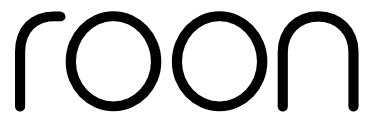Today, we’re celebrating the synergistic effect of numerous Roon software enhancements and what they mean for Windows and Mac Roon Core users going forward.
The Roon Blog is typically used for marquee announcements about new features, products, and partners – things like Fluency, MUSE Precision Audio Control, Roon ARC, and KKBOX integration. What you don’t hear about as often is all the equally crucial work that happens in tandem with our major rollouts. Our daily development strategy involves making subtle changes and enhancements that incrementally boost your overall Roon experience.
That work is our bread and butter and reflects our commitment to continuously improve our product. Those nuanced changes are inherently more challenging to summarize, explain, and spotlight. But when all the pieces come together, they have a cumulative effect that grabs our attention.
Miscellaneous fixes and enhancements revealed
Some of you may have noticed how often the wording above appears in our software release notes. Miscellaneous fixes and enhancements are how we describe the ongoing work mentioned earlier. Lately, momentum has been building around these progressive gains. Many of you have written us with statements like these to share your appreciation:

We’re happy that you’ve noticed the improvements and that your response has been so positive. Those advancements paved the way for today’s Mac and Windows refinements.
Best Roon experience, activate!
With this latest release, all Mac and Windows Roon Cores will automatically be upgraded to our new recommended software configuration – and we’ll take care of all that for you. All you have to do is update Roon as you usually do.
The upgrade won’t change how you use Roon day-to-day, and all your current settings and preferences will stay the same. But moving forward, you’ll enjoy a more responsive, high-performance, and smoother Roon experience if your Core is on Windows or Mac.
To achieve that, we rebuilt Roon to use a single install package on those platforms and restructured it to compartmentalize software tasks. Isolating Roon’s principal processing and background duties from the user interface functions you use to browse music and make selections creates more predictable performance from both and reduces contention for computing resources. It’s the same separation of functions that premium audio manufacturers utilize for optimizing music playback.
The result mirrors our recommended Roon configuration – running Roon Server and Roon separately on the same machine – but requires no extra work from you. Historically, these benefits have only been enjoyed by Windows and Mac users who studied Roon’s architecture and then downloaded and configured multiple packages. This release ensures that all users running their Core on Windows and Mac will enjoy the best Roon experience on those platforms moving forward.

Change requires change, AKA “Roon Core” is dead – long live Roon Server
Yes, you read that correctly. As part of these changes, we’ve decided to retire the term “Roon Core.” Yes, we realize that changing such a core element of our vocabulary might seem confusing, counterintuitive even. But to move forward, we must embrace a new language that more accurately reflects the key aspects of our Windows/Mac software optimization changes.
Roon Core terminology was initially crafted to explain that the Roon app had two unique operating modes. It could run as an all-in-one system with integrated server and control capabilities (a Roon Core) or as just a remote. Later, Roon customers asked for a separate Roon Server install package, and we delivered. Not long after, we created the Roon Remote app as yet another means of controlling Roon. Along the way, Roon Core became a synonym for the machine acting as the brain of your Roon system – either running Roon all-in-one (Roon Core) or Roon Server (the processing piece of Roon Core). The Roon downloads page was practically bursting with options. And with options and extended flexibility came an unintended result: confusion.
The vast majority of new customers run Roon on Windows or Mac, and many requested clarification about which option to install. Others simply installed the all-in-one version and continued with it. All the while, personal computers grew more powerful and quite capable of running Roon Server and Roon’s control functions independently – potentially delivering optimal performance from a single machine.
Our new software version takes advantage of that processing power, delivering an elevated experience for everyone who uses either Mac or Windows to run Roon.
The old all-in-one nature of Roon Core is no more. Roon’s control functions and Roon Server may be bundled together in a single install, but they now function independently. Roon Server runs as a separate background process and continues to run when you close Roon. If needed, it can be shut down via the System Tray on Windows or the Menu Bar on MacOS.
As of today, no matter where you run Roon: Mac, Windows, Linux, or Roon OS (on Nucleus or ROCK), the core software piece driving your system is Roon Server. With that, we’d like to thank Roon Core for its long-standing and loyal service and reintroduce it anew as Roon Server. All hail Roon Server.
But then, a name is only just that – a name. Words alone hardly capture our love of music or the satisfaction Roon provides when enjoying it. We’re grateful to be a part of your music journey and want to deliver the best possible experience for all our customers. Continuously improving Roon is our way of doing so. So you can focus on what’s most important – the joy of browsing, discovering, and listening to music.
For more Software Optimization details and resources, check out our software release notes and troubleshooting guide. Still not using Roon? See what all the excitement is about with a free 14-day trial!

